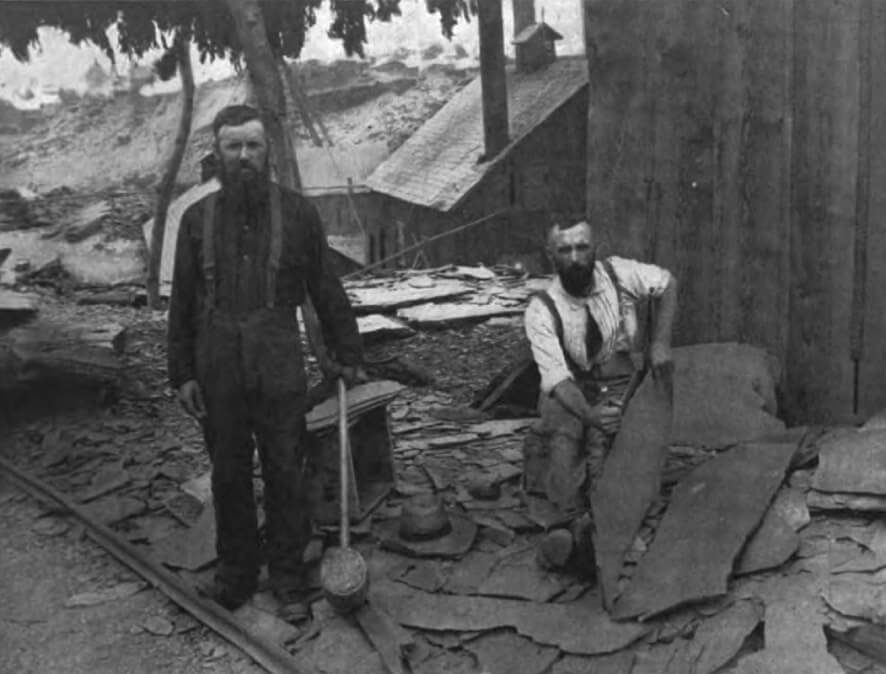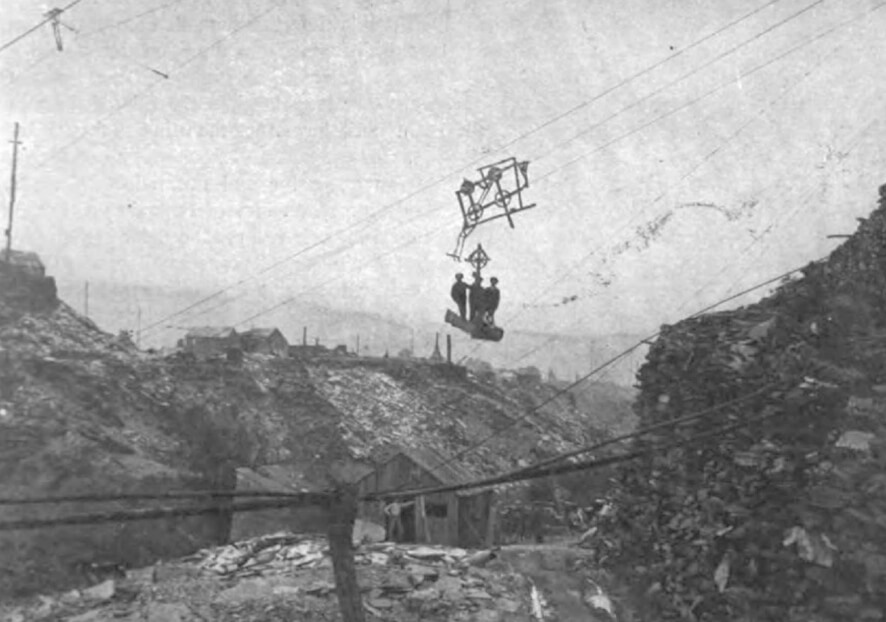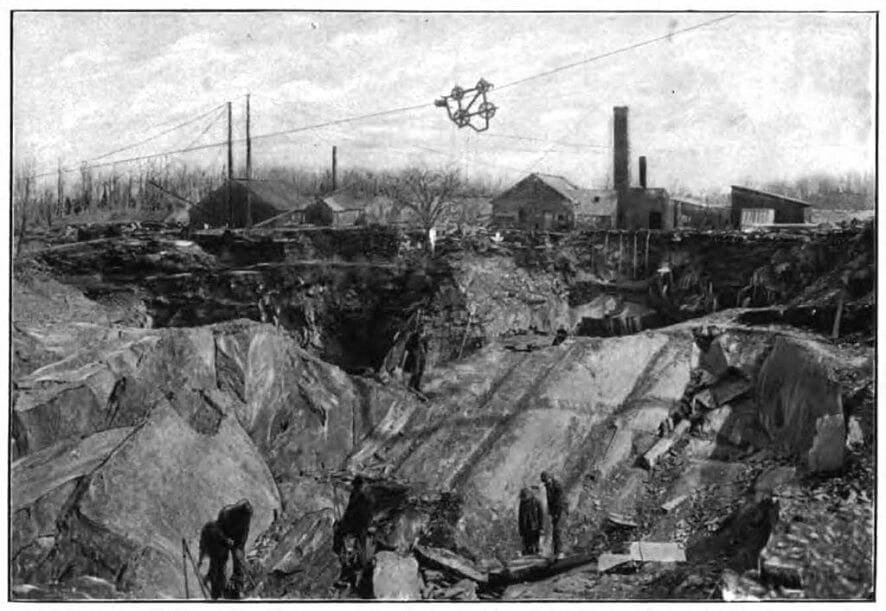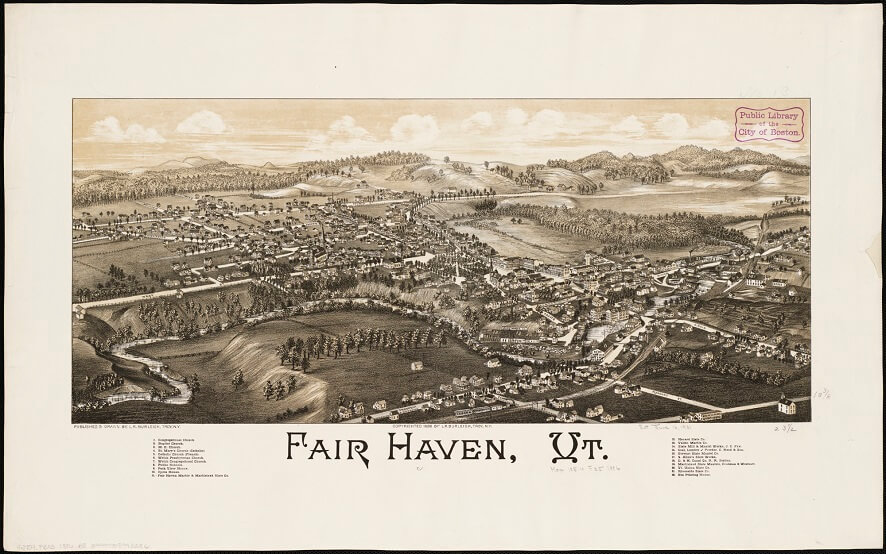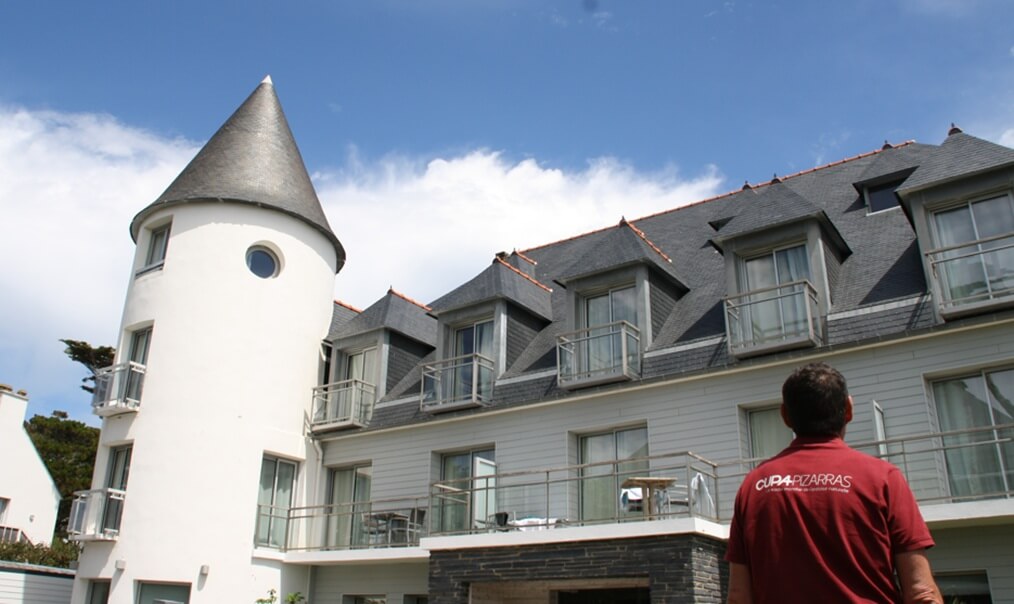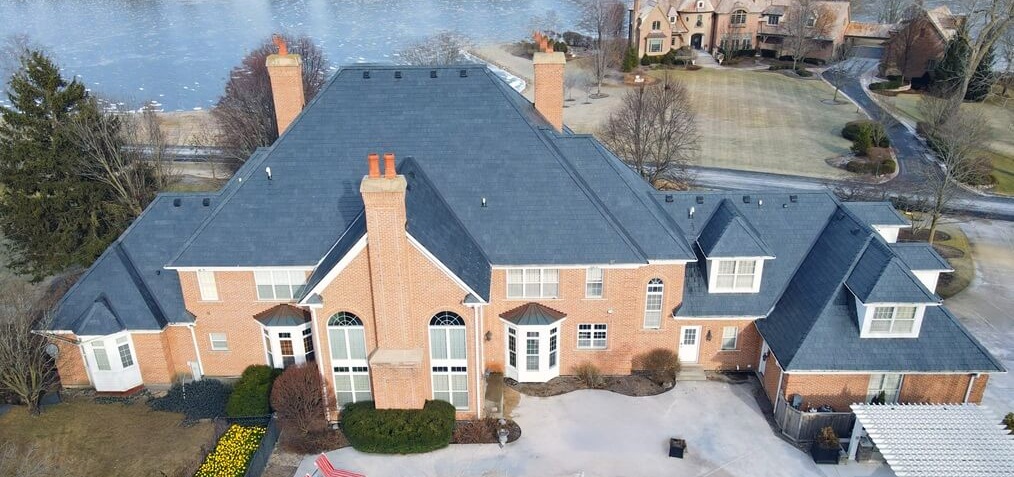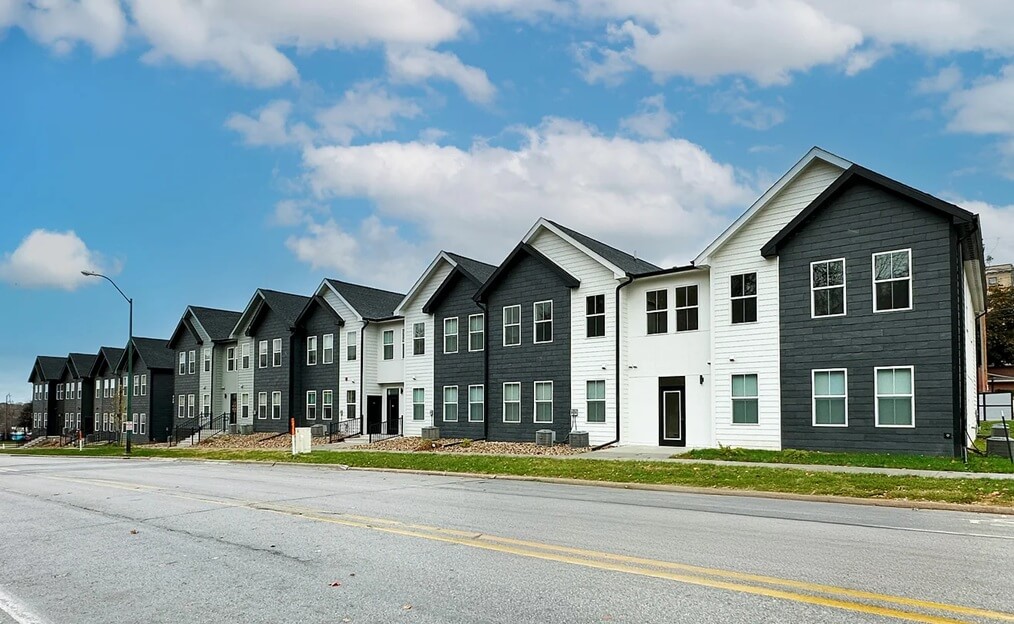Brief history of roofing slate in Northern America
Most of the roofing slate outcrops in America are located in the Northeastern states of the USA and the Southwestern states of Canada, in other words, along the Apalachians. For me, the most remarkable characteristic of Northern America is variety. Quarries are not as big as in Spain, but the diversity of commercial categories is extraordinary. But today is not time to talk about the Northern American roofing slates but about their history.
This history begins some years ago, during the Cambrian-Devonian geological periods (between 540 and 360 million years ago), when the clays that were going to be transformed (metamorphized, as we geologists like to say) into roofing slates were deposited in the vast continental shelfs of Pangea, the supercontinent. During the Cambrian, Northern America and Northern Europe were the same land. These deposits remained geologically calm until the Earth’s tectonic forces created the Apalachians, also separating Northern America from Northern Europe. This is the reason that the roofing slates from Wales are the same than those from Newfoundland and Nova Scotia.
Northon Bros quarry Granville: Taking a ride in the hoist, Granville quarry, around 1900.
Safety inspectors were not very much around at that time. Picture from “History of slate and slate quarrying”, Stone, vol. 28, nº 3, 1907.
Time went by, and one day, Welshmen arrived at the newly formed brand new country, the United States. Many of them had experience in roofing slate mining, and could spot a good outcrop when they saw it. On the other hand, the land was for the first to get it, not like in the old Europe, where quarries belonged to landlords or the Church who had the monopoly over them. But before Northern America produced its own roofing slates, slates were imported from Europe, form countries such as Wales, Germany, Ireland, France… In 1662, the Virginia General Assembly approved the construction of 32 houses with imported slate roofs.
Probably the first quarry opened in the US was Peach Bottom, in Pennsylvania. Joe Jenkins, in his book The Slate Roof Bible, tells the history of two brothers, William and James Reese, which accidentally discovered a slate outcrop when excavating for the foundations of their farm. Luckily, they were Welsh, and understood the potential of the rock. This quarry, Peach Bottom, is not in operation any more, but has become some kind of myth among the roofing slate people, due to its extraordinary quality.
York and Peachbottom Quarry, Cambria, c. 1898.
Photo by William Bullock Clark, State Geologist(Life time: 1860-1917), Public domain, via Wikimedia Commons.
In the following decades, other quarries were opened in Virginia (1812, Buckingham quarry), Vermont (Fair Haven quarry, 1839), Quebec – Canada (1860 Melbourne quarry), Pennsylvania (Chapman quarry, 1860), Maine (Monson quarry, 1870), and many others. Some of them were not profitable and had to close after a few years. Without a proper geological study it is virtually impossible to quantify the resources, you have to rely on pure luck, and geological studies were not common at that time. However, some of these historical quarries hit the jackpot and have been in operation up to date.
Quarrymen Pen Argyl: “Hipsters” miners in the Pen Argyl quarry, around 1900.
Picture from “History of slate and slate quarrying”, Stone, vol. 28, nº 3, 1907.
Being Canada and the USA countries colonized in a short period, buildings were not usually made with expensive and durable materials. On the other hand, there were not construction materials warehouses available (at least not as we know them today), so in most of the cases people used what they have at hand, mainly wood. Stone buildings were not uncommon, but not the norm neither. Also, the use of slate in roofs was something strange for many people.
Again, Joe tells the history of Colonel Alonson Allen, who opened the Fair Haven quarry in Vermont. In 1848, he installed a slate roof on a farm, but the owner had serious doubts about the roof, and told him to wait for one year before payment, in case the slate roof collapsed. After all, rocks are heavy and weren’t considered the best choice for a roof…Well, as you have probably guessed, the roof did not collapse, in fact Joe reports that is still in good condition, and the Colonel A. Allen got his money.
Print of Fair Haven from 1886 by L.R. Burleigh with listing of landmarks. You can zoom into this map.
Nowadays, the traces of the slate mining can be seen in names of towns such as Bangor, Pen Argyl, Slatington, or in geographic areas, such as the Slate Valley, Slate River… The history of roofing slate in Northern America was written by entrepreneurs, people that did worry about failing and were eager to learn and build a new country.
This history is not finished yet, the Northern American market is steadily growing and is looking forward for more roofing slates and any technological advance related with this rock. Personally, I have seen some of the most astonishing roofing slates ever in Northern America, and the National Slate Association Conference is the place to be for anyone working on roofing slates.
This article is part of a series written by the Geologist and slate consultant Víctor Cárdenes, where you can find interesting features about natural slate. If you want to receive slate stories in your email on a regular basis, subscribe here to our monthly newsletter.
